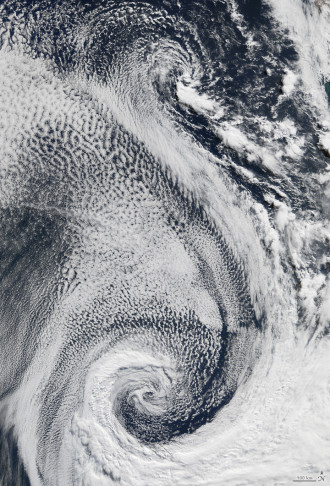Memory in the clouds – literally

Dr Gilles Bellon from the University of Auckland is undertaking research to transform our knowledge of how climate models are influenced by subtropical low-altitude cloud formations
Published on 5 November 2019
Cloud formations respond to changes in winds, temperature and humidity. An exciting new observation is that cloud formations have a ‘memory effect’ on local changes in meteorological conditions and on up-wind changes over surprisingly great distances. The impact of these memory effects on cloud formation and on global climate models is the focus of Dr Gilles Bellon’s new project supported by Te Pūtea Rangahau a Marsden.

Subtropical low-altitude clouds as seen by satellite MODIS (copyright: NASA)
Tropical low-altitude cloud formations play an important role in global cooling and could represent a significant mitigating or enhancing impact on global warming. Despite their importance, current climate models do not accurately account for the influence of low clouds and the associated feedback on temperature increases due to climate change. Therefore, gaining a better understanding of tropical low clouds and improving their simulation in models is of high priority for the climate-modelling community. This study will use meteorological data alongside the wealth of Māori knowledge on clouds and weather. This knowledge traces back to the Māori sea voyaging heritage and has been transmitted orally for generations. Dr Bellon will integrate mātauranga Māori and western scientific understanding of weather and climate in order to build a more accurate climate model.
New results from this work have the potential to make significant improvements to the precision and accuracy of climate predictions. This will have relevance to local communities and aid global sustainability.
